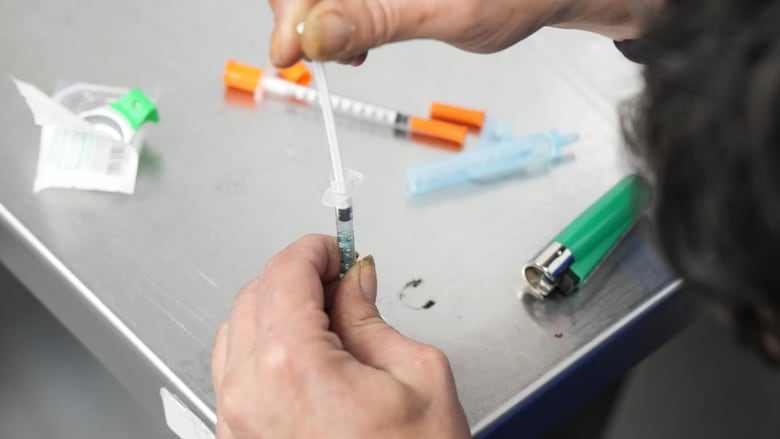Drug overdoses are declining in Ottawa, and no one really knows why
Front-line agencies suspect street drugs are becoming less toxic, but more testing needed

Ottawa's seeing a downward trend in both suspected fatal drug overdoses and related hospital visits since they peaked in 2023 — but the reason is unclear.
"2023 saw the highest recorded number of confirmed opioid toxicity deaths in Ottawa (207), with a nearly three-fold increase from 2019 (65)," Ottawa Public Health (OPH) told CBC.
The situation appears to be improving, however: Suspected fatal overdoses from all drugs this May were down 57 per cent compared to May 2024, and down 36 per cent in June.
Opioid overdose-related visits to the ER also dropped significantly, down 75 per cent in April and May compared to the same months last year. Overdose-related calls to police and paramedics dropped 49 per cent and 32 per cent respectively, compared to the same period last year.
April 2025 saw the fewest opioid-related ER visits for any April this decade, and the fewest suspected drug overdose deaths since April 2022.
"We did see a very similar drop in the number of overdose interventions that we're doing, and Ottawa has seen a similar drop in the number of overdose deaths," confirmed Rob Boyd, chief executive officer of Ottawa Inner City Health (OICH).
He said the downward trend is being seen across North America, in cities with and without supervised consumption sites.
While the reason for this decline remains unclear, front-line agencies in Ottawa say they haven't noticed a similar drop in drug use. Boyd said that would suggest the drugs themselves are becoming less toxic.
Illegal street drugs are often cut with substances such as xylazine and benzodiazepine, which have been linked to overdoses. It's possible the drugs in circulation now contain less of these "extra" ingredients.
But because street drugs are illegal and unregulated, their content is extremely difficult to monitor.

Drug testing machines
In an effort to find out more about what they contain, OICH and scientists from the University of Ottawa have teamed up to test samples of street drugs under an exemption from Health Canada.
At a supervised consumption site in downtown Ottawa, OICH team lead Andrew Campagna has been using a drug testing machine called SCATR.
It analyzes the samples in under 15 minutes, allowing clients to get "a quick analysis of what's in their drugs in real time," Campagna said.
The substances identified are crossed-referenced with a drug database, but anything outside that list is labelled as unknown.

Campagna said testing often reveals the presence of fentanyl, sometimes unbeknownst to the user.
"Where you get a lot of really crap overdoses is the crack smoker, the cocaine user, the crystal meth user where fentanyl was cut into their substance," he said.
OICH also sends drug samples to a lab at the University of Ottawa for further testing using a technique called gas chromatography mass spectrometry (GCMS). GCMS can isolate and identify substances not limited to SCATR's database, according to Cory Harris, an associate professor who researches ethnobotany, chemistry and bioactivity at the university.
Harris said his team only started tracking samples recently and hasn't had time to chart major trends, but he confirmed the most common drugs detected are fentanyl and cocaine, often mixed with benzodiazepines, ketamine or xylazine — a potentially lethal combination.
"Taking them at the same time would be shutting down your central nervous system," he said.

'It could always get worse'
Despite the positive indications, those on the front line of Ottawa's drug crisis aren't celebrating yet.
"I would compare it to a tsunami, when you suddenly see the tides pulling back," Boyd said of the apparent reduction in drug toxicity.
"When those waters come back in, they come back and move with greater force afterwards," he said. "I don't think we should be letting up our guard whatsoever."
Boyd said staff interventions at OICH have doubled recently, but that was after the closure of two supervised consumption sites in the city.
There's another fear: People who are growing used to a less toxic drug supply will have a lower tolerance if and when toxicity levels rise again.
"We really are at the mercy of uncontrolled markets," Boyd said. "It could always get worse — that's the one thing we've learned over the years, particularly with the toxic drug crisis."

